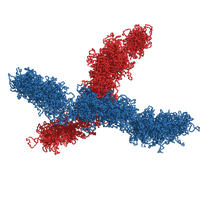DNA of the human genome is 2 meters long and is folded into chromosomes that fit in a 10-micron cellular nucleus. I will discuss physical principles that govern folding of long DNA molecules, including phase separation, topological effects in polymer systems, and non-equilibrium phenomena. Recent studies have shown that critical to DNA folding is collective activity of molecular motors. First predicted theoretically, this motor activity was found experimentally in living cells and observed in single-molecule experiments. Such motor activity emerges as a universal mechanism organizing chromosomes through cell cycle and likely acting in all organisms.
Host: Sid Goyal


